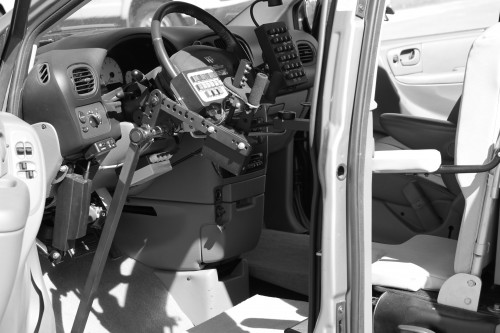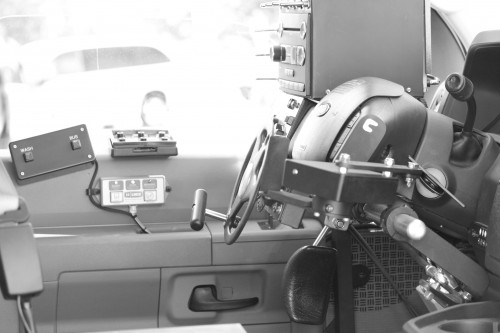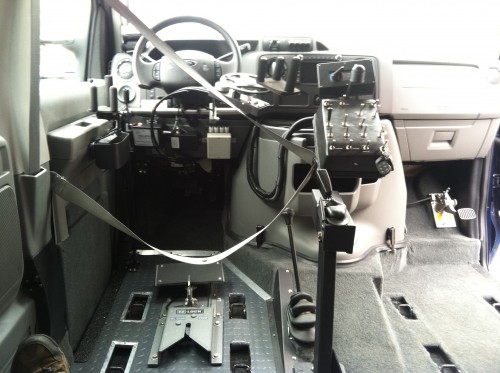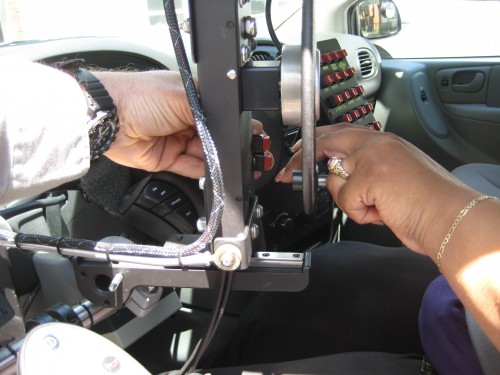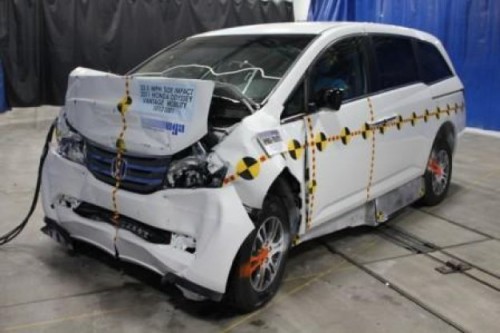BATTERY MAINTENANCE – SOME USEFUL TIPS.
BATTERY MAINTENANCE: SOME BASIC TIPS
There is nothing worse than getting inside your wheelchair van, turn the key (or pushing a few buttons), and hear “click, click, click, click…” Oh no, a dead battery! Although this isn’t a major mechanical issue, it’s a major inconvenience, and could possibly leave you stranded in a parking lot or even unable to get in or out of your car or wheelchair van. The good news is that it’s very preventable.
It’s important to consider all of the electrical devices, and the power demands required for todays wheelchair vans and other vehicles outfitted with mobility equipment. These devices could be factory systems like power door locks, power windows, power seats, anti-theft devices, keyless entry and even the vehicle’s clock. These devises could also be aftermarket systems or mobility equipment like a remote starter, wheelchair lift, transfer seat, scooter lifter, or an electronic wheelchair securement system. All these electronics require a source of reliable power, so read on, and we will explain some basic tips and information regarding non-sealed lead acid batteries typically used in wheelchair vans and mobility equipped vehicles.
First, here’s a brief explanation on how your wheelchair van’s battery works and how it’s recharged: A vehicle battery’s main purpose is to provide a source of power or electricity to get the vehicle started. Its secondary purpose is to supply power or electricity to all of those other systems and devices mentioned above. Once a car, truck or wheelchair accessible vehicle is started and the engine is running, the vehicle’s charging system, namely the alternator, immediately goes to work recharging the battery back to 100% state of charge. This is due to the loss of battery power that was required to turn over the engine and start your vehicle. Additionally, the vehicles charging system provides all of the electricity that the automobile needs to be driven, like operate your lights, windshield wipers, heat and air conditioning systems, even play your favorite radio station. Your wheelchair lift, scooter lifter, turnout seat or other electronic adaptive mobility equipment is connected directly to your battery, compounding its importance in keeping your vehicle reliable. In simpler terms, your wheelchair van’s battery is essentially like a gas tank. If you keep taking power out of it and your vehicle’s charging system can’t put anything back into it, or isn’t given an opportunity to do so, you soon will have no power in reserve for when you need it most.
Driving habits, not defects in batteries, are often the cause of battery failure. Short and infrequent trips can rob a battery of its charge and not allow it to properly recharge. In fact, a German manufacturer of luxury automobiles revealed that of 400 vehicles returned to dealerships under warranty for not starting or a dead battery, nearly 50% simply needed their batteries charged, not replaced, and had no other mechanical problems. They simply didn’t have enough of a charge, most likely due to the owner’s driving habits.
Another common cause of battery failure is acid stratification. The electrolyte on a stratified battery concentrates on the bottom, causing the upper half of the cell to be acid poor. This effect is similar to a cup of coffee in which the sugar collects on the bottom when the waitress forgets to bring the stirring spoon. Batteries tend to stratify if kept at low charge (below 80%) and never have the opportunity to receive a full charge. Short distance driving while operating power doors, power ramps, power kneel systems, and HVAC electric blowers contributes to this. Acid stratification reduces the overall performance of the battery.
The more common reasons for a dead battery are:
- Forgetting the headlights are turned on after you park the van.
- Forgetting a reading light or courtesy light is turned on. This is easy to do since most cars have a feature that delays turning off the interior lights after you leave the van, so that you don’t notice that you left a light turned on.
- A corroded or loose connection between the battery and the cables attached to it.
- A defective interior door switch or trunk lamp switch that leaves the bulb lit.
- A defective charging system that does not replenish the battery’s charge.
- An old battery that has lost its ability to maintain a full charge.
- Repeated use of a platform wheelchair lift, scooter lifter, turnout seat or other mobility equipment without allowing the vehicle’s battery to re-charge.
Batteries can have a life expectancy of 3 to 5 years, after which they should be replaced preventatively even if they are working well. Batteries have to work much harder during winter months when it is cold out, and batteries often start to show signs of failure in sub-freezing temperatures. Maintenance is an important part of ensuring a battery’s operating life. Simply driving the vehicle does not always adequately recharge the battery.
Here is some information that will help preserve battery life on your wheelchair van or vehicle with mobility equipment.
- Vehicles stored for more than 30 days should have the negative battery cable disconnected.
- In cold temperatures, a discharged battery can freeze and damage the plates. Batteries with damaged plates require replacement.
- In hot weather (80 degrees and above), if a battery discharges, it greatly affects the battery’s long-term life.
- Do not leave any door open for an extended period. The OEM electronic system will not “sleep” right away. During this time, there could be up to a 200-milliamp draw from other devices and systems and mobility equipment in the vehicle, even if the dome lights are off.
- Very short drives reduce a battery’s charge while long drives increase it.
Vehicles that are not driven on a daily basis may require the use of an On-Board Automatic Trickle Charger to keep the battery fully charged. When buying a new battery for your wheelchair van, we suggest you purchase and install a battery with the greatest Cold Cranking Amp (CCA) capacity possible. Of course the physical size, cable hook up, and terminal type must be a consideration.


